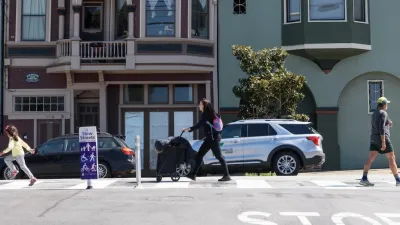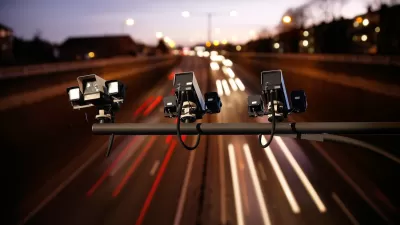There's a lot of babbling on in this blog about how streets are public space, that they are for people, and that they should be designed equitably for everyone.
The driving public, after decades of being shown images on television and in print that owning a car makes you better/cooler/[add other socially positive superlatives here] than everyone else, can express outrage at the thought that planners might think of taking away "their streets". Quite irrational I think, because if you plunk down tens of thousands of dollars for such a fancy machine, you'd think there would be a modicum of satisfaction knowing that roadway congestion equates to more quality time spent with man's most prized material possession, no? Nonetheless, the pursuit of a rational urban roadway network is worth the struggle, and we must march forward.
The question I put forth here is, essentially, how much is too much? In pure city-grid fashion Hoboken, we have been regularly encountering development opportunities where closures of street segments have been on the table. The reasons for these closures vary from underpass clearance issues to the creation of small public spaces/parks/plazas, etc. The arguments for and against roadway closures are both valid:
For: Eliminates through-traffic in neighborhoods streets/properly redirects through-traffic to arterials; provides opportunities for new public spaces in a dense environment with little available free land; adds more interesting locations throughout the city; increases opportunities for social interactions; more fairly uses limited public space for a broader range of residents.
Against: Disrupts the flexibility (takes away options) and distribution of traffic in the grid; unfairly redistributes traffic volumes onto other neighboring streets; adds to motorist confusion; fear of adding to congestion on other streets (although this is largely disproved time and again in examples worldwide); takes away on-street parking.
Not all of these are true or valid for every situation, but they are the common arguments. In an entirely philosophical complete streets debate, one might argue that eliminating vehicular use on any street makes that street incomplete. A counter argument to this could be that, looking at the city as a whole, just as some streets are, where appropriate, designed exclusively for cars (tunnels, highway ramps, etc.), other streets are justified, where appropriate, to be designed exclusive of cars.
Professionally, the industry makes the case both ways, and I'm not sure there is consensus on where and when one way or the other applies. There are clearly camps on both ends of the spectrum that lean heavily towards a steadfast policy, but the rest of us fall somewhere in the middle and the answer, as is often the case, is not so immediately evident. What say ye?

Manufactured Crisis: Losing the Nation’s Largest Source of Unsubsidized Affordable Housing
Manufactured housing communities have long been an affordable housing option for millions of people living in the U.S., but that affordability is disappearing rapidly. How did we get here?

Americans May Be Stuck — But Why?
Americans are moving a lot less than they once did, and that is a problem. While Yoni Applebaum, in his highly-publicized article Stuck, gets the reasons badly wrong, it's still important to ask: why are we moving so much less than before?

Research Shows More Roads = More Driving
A national study shows, once again, that increasing road supply induces additional vehicle travel, particularly over the long run.

Judge Halts Enforcement of Anti-Homeless Laws in Grants Pass
The Oregon city will be barred from enforcing two ordinances that prosecute unhoused residents until it increases capacity and accessibility at designated camping sites.

Advancing Sustainability in Los Angeles County Schools
The Los Angeles County Office of Education’s Green Schools Symposium brings together educators, students, and experts to advance sustainability in schools through innovative design, climate resilience strategies, and collaborative learning.

Using Old Oil and Gas Wells for Green Energy Storage
Penn State researchers have found that repurposing abandoned oil and gas wells for geothermal-assisted compressed-air energy storage can boost efficiency, reduce environmental risks, and support clean energy and job transitions.
Urban Design for Planners 1: Software Tools
This six-course series explores essential urban design concepts using open source software and equips planners with the tools they need to participate fully in the urban design process.
Planning for Universal Design
Learn the tools for implementing Universal Design in planning regulations.
City of Moreno Valley
Institute for Housing and Urban Development Studies (IHS)
City of Grandview
Harvard GSD Executive Education
NYU Wagner Graduate School of Public Service
City of Cambridge, Maryland
Newport County Development Council: Connect Greater Newport






























